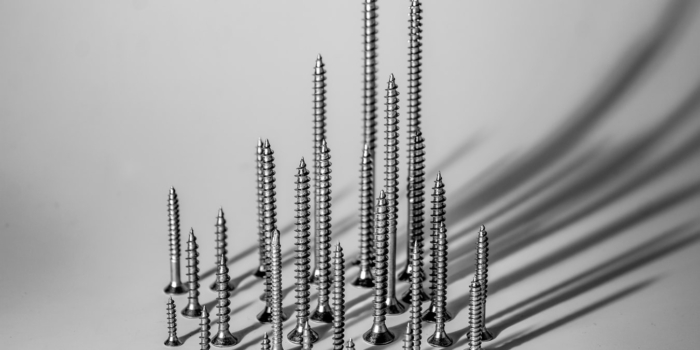
Screws, or at least the concept of the screw, dates back to around 200 B.C. The market has expanded since those ancient times, but the function has remained the same; without fasteners of all shapes and sizes — whether they’re micro screws or two-inch custom shoulder bolts — the world as we know it would fall apart. If you’re looking to build a custom screw for a specific project, you need to know what you’re dealing with. Let’s take a look at seven different types of screw heads.
Check out our EZ Screw Builder to build your custom screw!
- Slotted: Slotted screw heads are easily recognizable. As the original screw drive, they’re used everywhere in the U.S. and throughout the globe. However, the practice of using slotted drives is on the decline due to the fact that the screwdriver often slips out of the slip, especially when heavy torque is being applied.
- Phillips: This screw drive type is also exceptionally popular. Just like the slotted drives, they’re used in a wide variety of applications all over the world, but they come in different sizes (the most common being #2).
- Phillips Tamper-resistant: This drive is the same shape as sizing as Phillips, but includes a tamper-resistant pin in the middle.
- Pozidriv: If you live or work in Europe, you’ll recognize this distinctive kind of screw heads. It resembles a Phillips drive, but includes four more contact points. It’s rarely used in the United States.
- Square Recess: Square recess heads are very resistant to slippage (also known as cam-out), which can mar the screw head very easily. As a result, they’re being used more and more in the United States.
- TORX: This star-shaped screw head is frequently used in electronics in the U.S., although they’re gaining ground in a number of other industries. They’re also available in tamper-resistant form.
- Spanner: This drive is sometimes referred to as “snake eyes” due to its two distinctive holes at its top. It’s primarily used in applications where tampering needs to be prevented, which covers everything from electronics to bathroom stall doors in public restrooms.
Knowledge is everything, no matter what project you’re working on or what job needs to be done. When you understand the nuances of different fastener head types, you’ll be able to make sure that you’ve got the right fastener for the task at hand.
Related Articles
When it comes to product design, every detail matters. From the choice of materials to the manufacturing process, every decision can significantly impact the functionality, durability, and aesthetics of a...
Spending $1500-$3000 on a custom screws may seem excessive to some, but for designers and engineers who are passionate about their craft, it can be a necessary expense to solve...
Tamper proof screws are an important security feature for many industries, including electronics manufacturing, aerospace, and government. They are designed to prevent unauthorized access to sensitive equipment, products, or areas...

